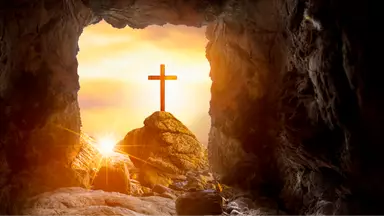We all have an idea of what Jesus Christ might have looked like, and that image can vary drastically depending on what culture you were brought up in.
But the world’s widely different mental depiction of Jesus could soon be lining up, thanks to a scientific breakthrough that revealed what the Lord is likely to have looked like.
Along with an ancient text excluded from the Bible which drastically alters Jesus’ message, it might change everything we thought we knew about the son of God.
Back in 2002, associate professor of world Christianity at the Columbia Theological Seminary, in Atlanta, Carlos F. Cardoza-Orlandi explained per Popular Mechanics how our mental imagery of Jesus wildly changes.
“While Western imagery is dominant, in other parts of the world he is often shown as Black, Arab, or Hispanic,” he said.
Now, thanks to forensic anthropology, in which British scientists have been able to re-create Jesus’ face with the assistance of archaeologists from Israel.
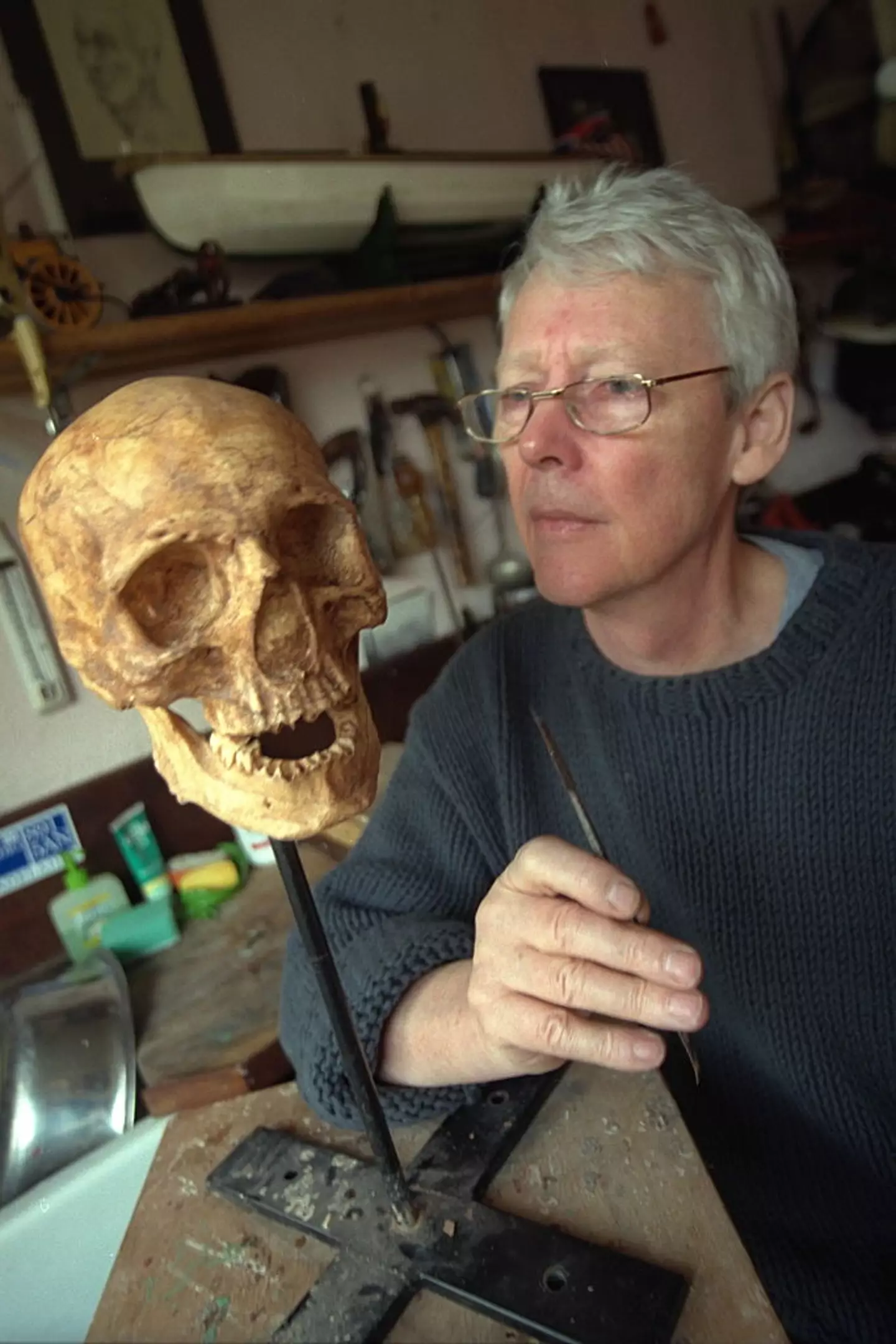

Facial reconstruction specialist Richard Neave examines a cast of the Jerusalem skull that he used to build up a 3D picture of the face of Jesus (Bob Collier/Sygma/Sygma via Getty Images)
Using knowledge of the study of primate and human evolution, and the study of skeletons, retired medical artist Richard Neave, of the University of Manchester, England, reconstructed what he and his peers believe is the most accurate depiction of Jesus.
Gathering skulls from around the same era and place as Jesus used to live and preach 2,000 years ago, Neave put them through a computerized tomography.
The process created an x-ray of the skulls that detailed even the most minute details on them, before Neave put it through a high-tech computer program that detailed how thick the skin would have been.
However, the process was unable to identify what kind of hair Jesus had or his eye color.
To determine these, Neave and his team took to various archeological sites that were dated before even the Bible was created – from the 1st century, which suggested Jesus’ eye color was dark and that he also had a beard.
Did Jesus have long hair?


A plaster cast of the face, built up from an original 1st century skull (Bob Collier/Sygma/Sygma via Getty Images)
In the Bible, there is a line from the Gospel of Paul which read: “If a man has long hair, it is a disgrace to him.”
The scientists’ thinking is that Paul would not have written that if his Lord did.
Although, there’s an argument that Jesus donned long hair – with the most logical reason being that the Shroud of Turin, which many believe Jesus was wrapped in after death, had marks resembling an imprint of long hair on it.

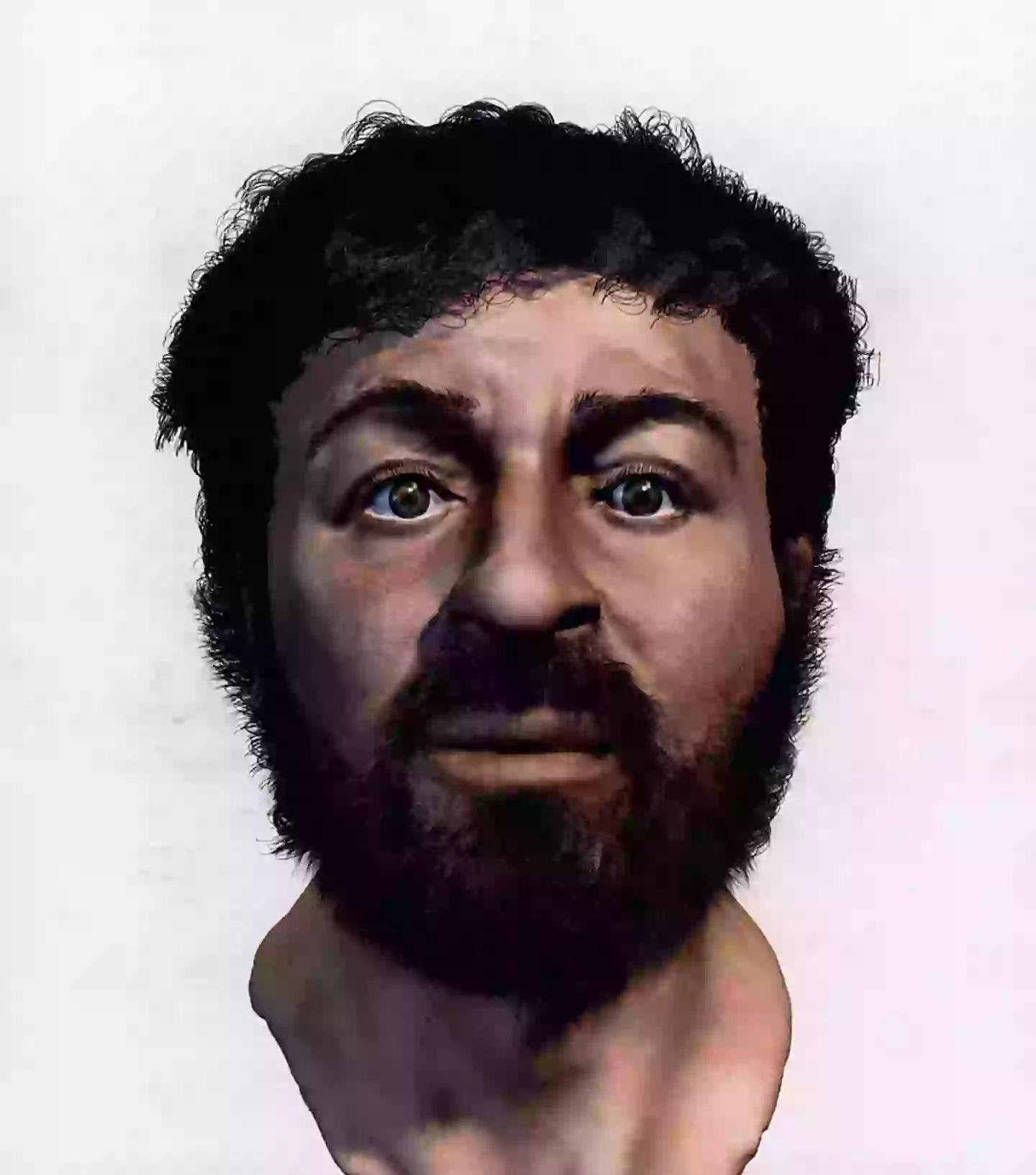
Computer-generated image of Jesus Christ, based on the study of the skull of a Jewish man of 1st century. Image devised by Richard Neave who is a specialist in facial reconstruction. (Bob Collier/Sygma/Sygma via Getty Images)
It is something that has long been debated, but most biblical scholars have come to the assumption that the Son of God had short hair with tight curls.
How tall was Jesus?
While archeologists have pinned his height at being around 5ft 1in – which is average compared to others in the area at the time, as well as being 110 pounds.
But with Jesus working as a carpenter it could be argued that he was more muscular than other folks.
After completing his artwork, Neave insisted that the image isn’t exactly that of Jesus, but of someone who would have lived in the area at that time.
Professor of anthropology at the University of California, in Santa Cruz, Alison Galloway gave her expert opinion to Popular Mechanics: “This is probably a lot closer to the truth than the work of many great masters.”
Featured Image Credit: Getty Images/Surasak Suwanmake
.png)
.png)
Just shy of 2,000 years ago, Jesus Christ died by way of crucifixion after being arrested and sentenced to death… or so we thought.
A sacred text banned from the Bible claims to reveal the identity of the person who killed Jesus, changing everything that we know about the death of the Lord.
The ancient line is written in the Acts of Pilate, more commonly known as the Gospel of Nicodemus, but despite professing the ‘truth’ about the Son of God, it has never been accepted into the Holy Book as we know it.
But before we get into it, let’s quickly run through the time and date of Jesus’ death.


The Crucifixion by Jean Francois Portaels (Getty Stock Images)
It has been universally believed that Jesus died on Good Friday, therefore he died on 3 April AD 33 at around 3pm.
Even NASA has looked into it. On its website explaining how far back in history solar eclipses have been recorded, the space agency stated its evidence.
“Christian texts mention that the Moon turned to blood after Jesus’s crucifixion – potentially referring to a lunar eclipse, during which the Moon takes on a reddish hue,” it read.
“Using this textual source, scholars narrowed down a possible date of crucifixion to Friday, April 3, 33 C.E. because a lunar eclipse occurred that day.”
So now we’re all singing from the same hymn sheet, let’s get into it.
Pierced by a spear on the cross
In the Bible, the book of John chapter 19 verse 34 (John 19:34), it references a Roman soldier having stabbed Jesus – who many scholars believe would have likely actually have been called Yeshu Nazarene.
The verse in question reads: “But one of the soldiers pierced His side with a spear, and immediately blood and water came out.”
But who was that soldier?


Sculpture of Jesus and Longinus, the Roman soldier who pierced Christ in his side with a lance, in the Cathedral of Leon, Spain (Getty stock)
The man known as Longinus
In the Gospel of Nicodemus, the scripture claims to know the identity of that solider. His Name? Longinus.
Deep in the book it notes that Longinus took a lance and pierced the side of Jesus, and just like in the Book of John, blood and water poured out of him.
While the Eastern Orthodox Church claim Longinus to be the person quoted in Matthew 27:54 saying “Truly this was the Son of God,” after an earthquake followed Jesus’ death.
Despite having never been named in the Bible, legend has it that he witnessed the supernatural events that took place and converted to Christianity.
However, there’s no physical or historical evidence that actually confirms Longinus to be a real person, although there are many stories that have been passed down which details how he was later killed due to his Christian beliefs – having preached the gospel.
That was at a time when Christianity was illegal – during the early centuries of the Roman Empire.


The Statue of Saint Longinus the Centurion Rome’s St Peter’s Basilica, Vatican City (Steve Christo/Corbis via Getty Images)
While there is no evidence to confirm his existence, other than scripture, a statue of Longinus can be found under the dome of Saint Peter’s Basilica, in the Vatican City.
Why the Gospel of Nicodemus was banned
There is a debate over who exactly wrote the scripture due to the date recorded.
It was never canonized by early Church leaders. It is thought that it is because it is a later work dating back to around the 4th or 5th century – so hundreds of years after the events took place.
Although many others believe it was the work of Nicodemus, who was mentioned in the Gospel of John as to having helped bury Jesus.
Featured Image Credit: Getty Images/Pleasureofart
Topics: Religion, Catholic Church, History
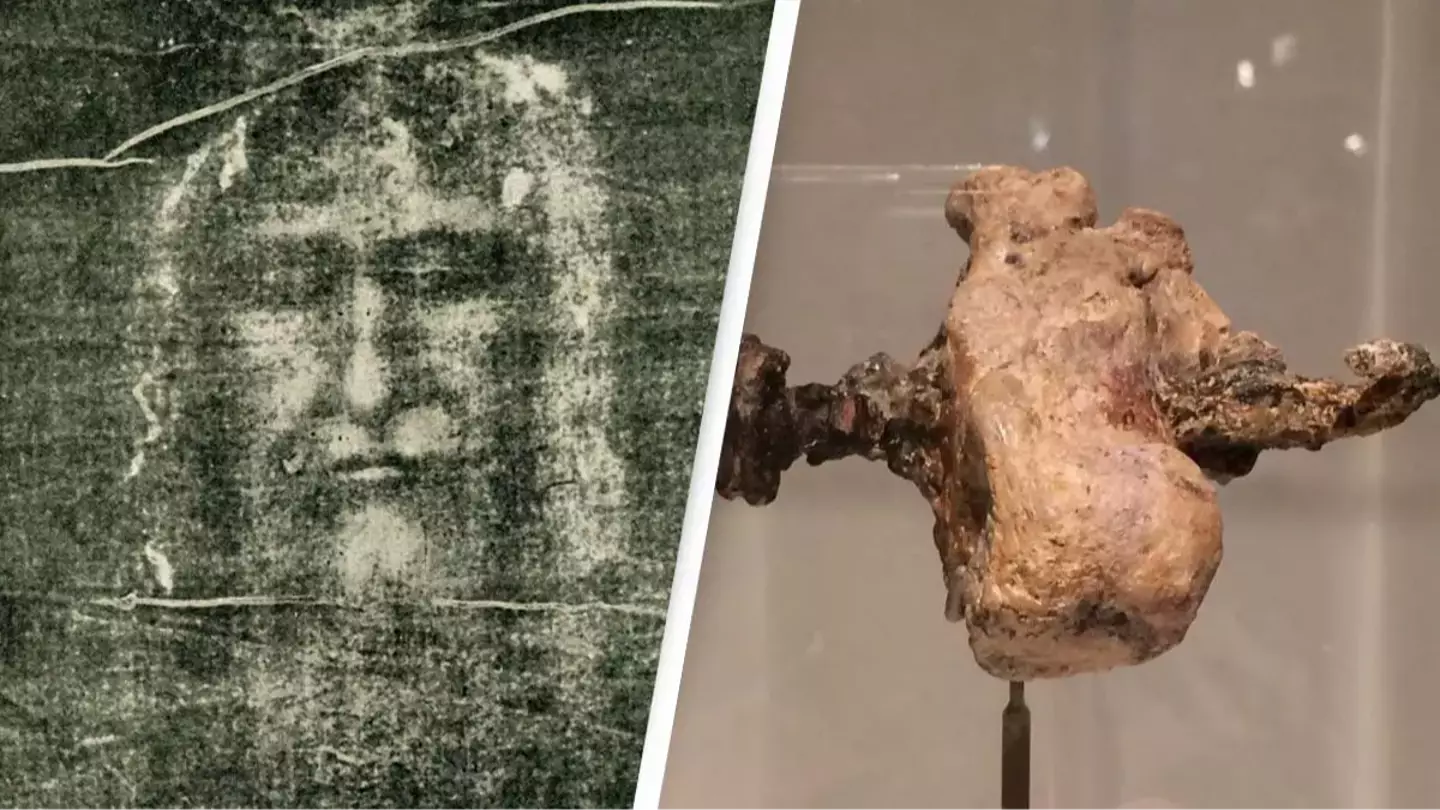

Even if you’re not a Christian, you may have pondered whether a man named Jesus Christ did actually live 2,000 years ago in Israel.
Whether he turned water into wine and rose from the dead is perhaps more up for debate for the atheists among us, but historians have seven pieces of evidence that suggest Jesus actually existed.
Let’s get straight into it.
1. Shroud of Turin
Some people believe that Jesus’ body was wrapped in the Shroud of Turin, an ancient holy relic, after his crucifixion.
But new evidence casts doubt over whether this was actually the case.
Brazilian graphics expert Cicero Moraes created a virtual simulation of the shroud to place over an image of a body to see whether impressions on the fabric were a match.
He argued that rather than the cloth used to shroud Jesus, it is actually a piece of Christian art.
Moraes said: “On one side are those who think it is an authentic shroud of Jesus Christ, on the other, those who think it is a forgery.
“But I am inclined towards another approach: that it is, in fact, a work of Christian art, which managed to convey its intended message very successfully.”
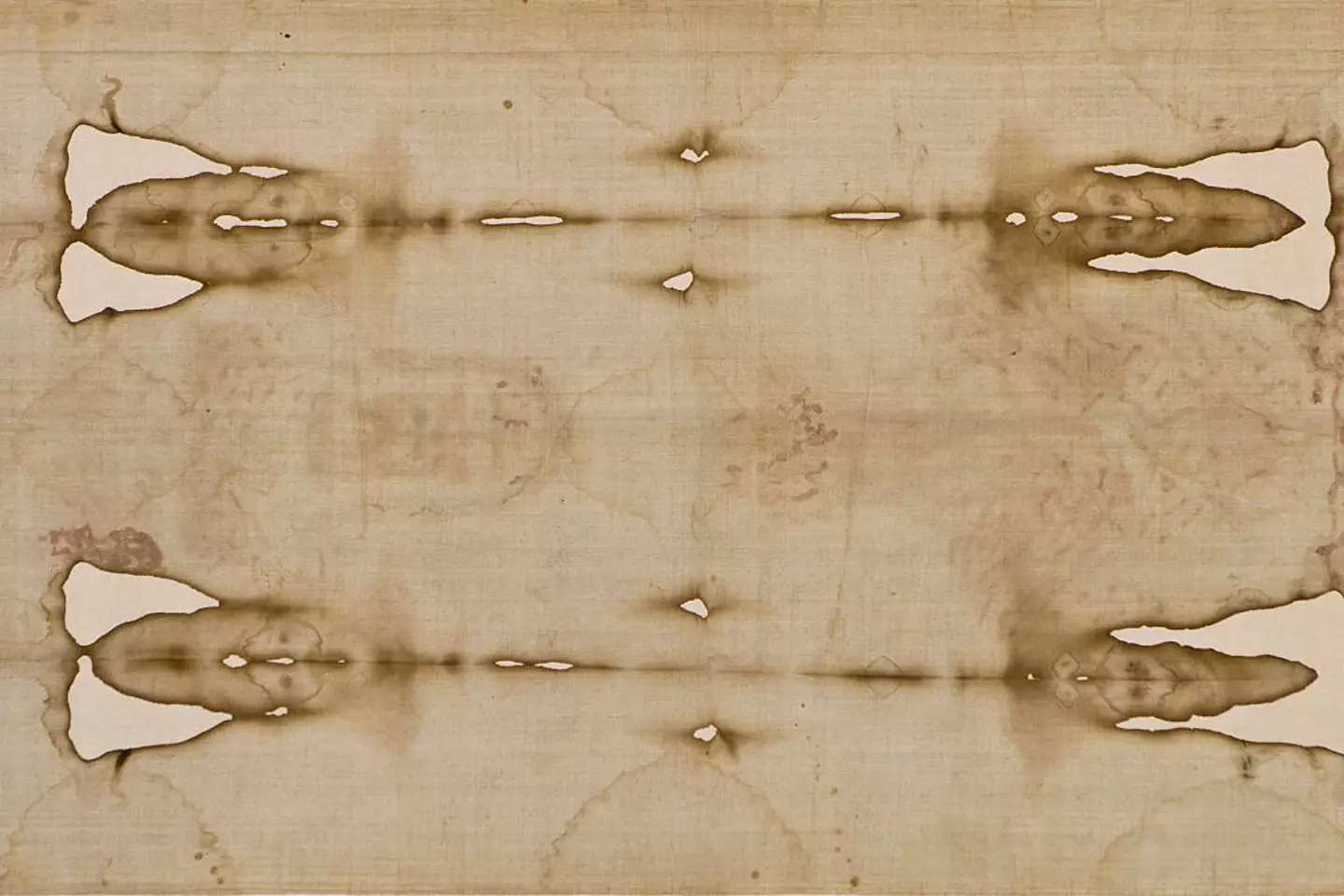

The Shroud of Turin is a linen cloth with the image of a man, it is considered an important relic by Christians who believe it to be the burial shroud of Jesus bearing his image after the crucifixion (Marco Destefanis/Pacific Press/LightRocket via Getty Images)
2. Literature
It is the obvious one, we have a good idea Jesus Christ actually existed because we’ve got hundreds of passages about him in the Bible and then all the other books.
You’ve got the non-Christian authors who actually opposed Christianity, but they speak about this man called Jesus.
Speaking to the MailOnline, Dr Lawrence Mykytiuk, a specialist in Hebrew studies from Purdue University, said: “We have many very good reasons to accept the real, historical existence of Jesus of Nazareth.
“For well over 1,000 years, no one claimed that Jesus did not exist.
“Every single non-Christian source from ancient times recognizes, implicitly or explicitly, that he was a real person who really existed.”
3. A heel from a crucified man
Some scholars believe that if Jesus did actually exist, he would not have been granted a proper burial if he was an enemy of the state, and they argue that he would have been tossed into a mass grave after crucifixion.
But back in 1986 a construction crew happened upon a number of tombs in northern Jerusalem, and one had the name Jehohanan marked on it – and he had a nail in his heel, indicating he was crucified.
This supports the details of Jesus’ crucifixion, and also suggests family members could retrieve the remains of crucified criminals, as depicted in the Bible.
It doesn’t exactly prove Jesus’ existence, but it vouches for the accounts of his death as written in the Gospel.
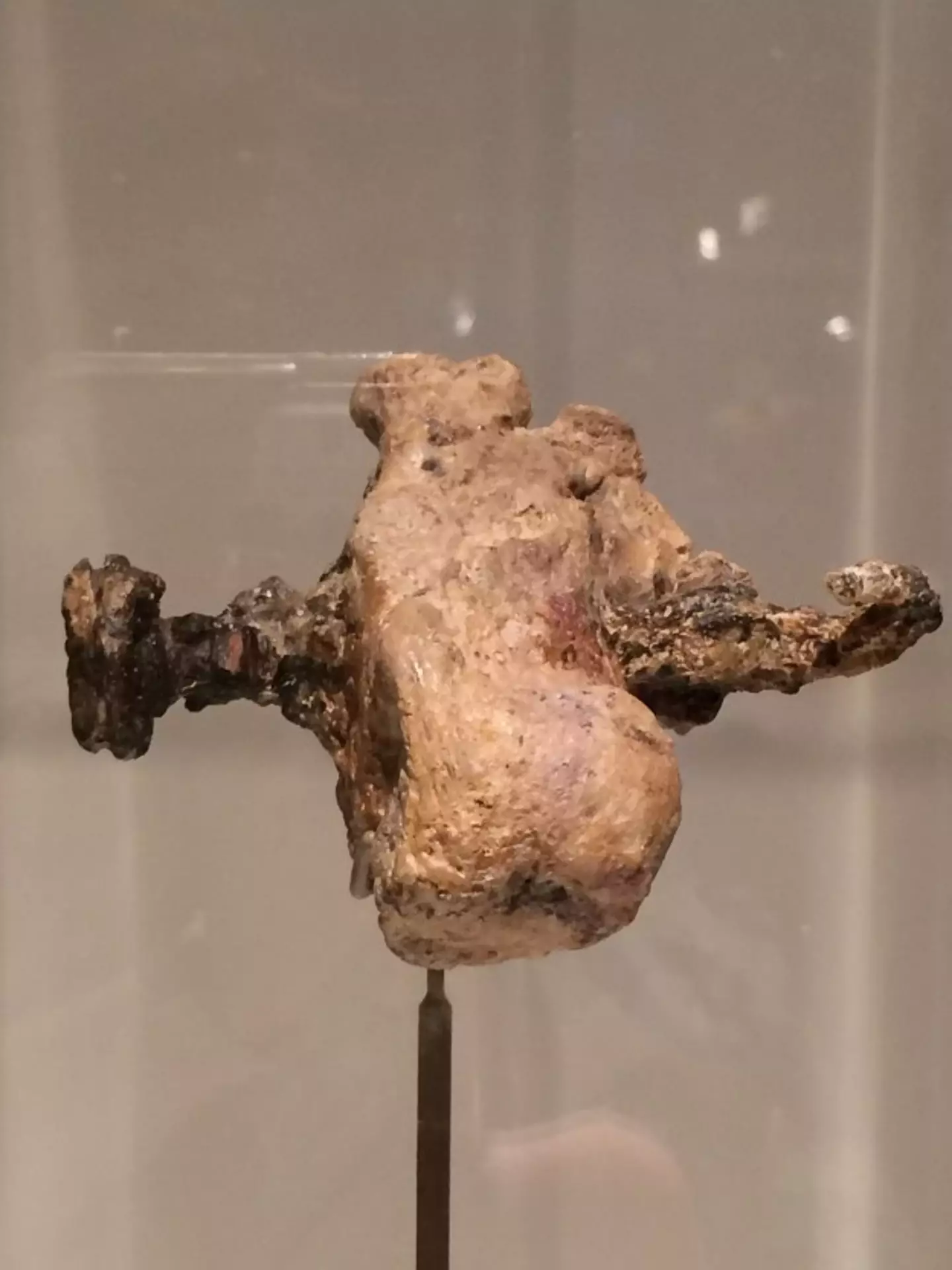

A heel of a man who was crucified proved that even people deemed to be enemies of the state were allowed to be buried properly following their death penalties (Israel Museum)
4. Jesus referred to as a ‘God’ in an inscription
On the floor of an Israeli prison an inscription reads ‘The god-loving Akeptous has offered the table to God Jesus Christ as a memorial’ – and it it dates all the way back to the year 230.
It tells us that as little as 200 years later he was seen as a divine figure, the 581-square-foot mosaic was labeled ‘the greatest discovery since the Dead Sea Scrolls’ by the CEO of the Museum of the Bible Carlos Campo.
5. The Church of the Apostles
Just seven years ago, in 2017, archaeologists discovered the remains of a Byzantine basilica, what would have been a large structure, in the El Araj region of Israel next to the River Jordan.
It is believed Peter, Andrew and Phillip, Jesus’ apostles, lived there.
Speaking in 2021 Professor Steven Notely told the Biblical Archaeology Society: “There are no other churches in the vicinity mentioned by Byzantine visitors to the Holy Land, and there is no reason to question that this is the [Church of the Apostles].”
6. Graffiti or ‘Alexamenos Graffito’
Yes, around 1,900 and 1,700 years ago someone graffitied a rather crude version of Jesus into a wall in a room near the Palatine Hill in Rome, Italy.
It was dubbed the Alexamenos Graffitto and it depicted a man with a donkey’s head nailed to a cross, while another man worshipped him with a message alongside it that read: “Alexamenos worships [his] god.”
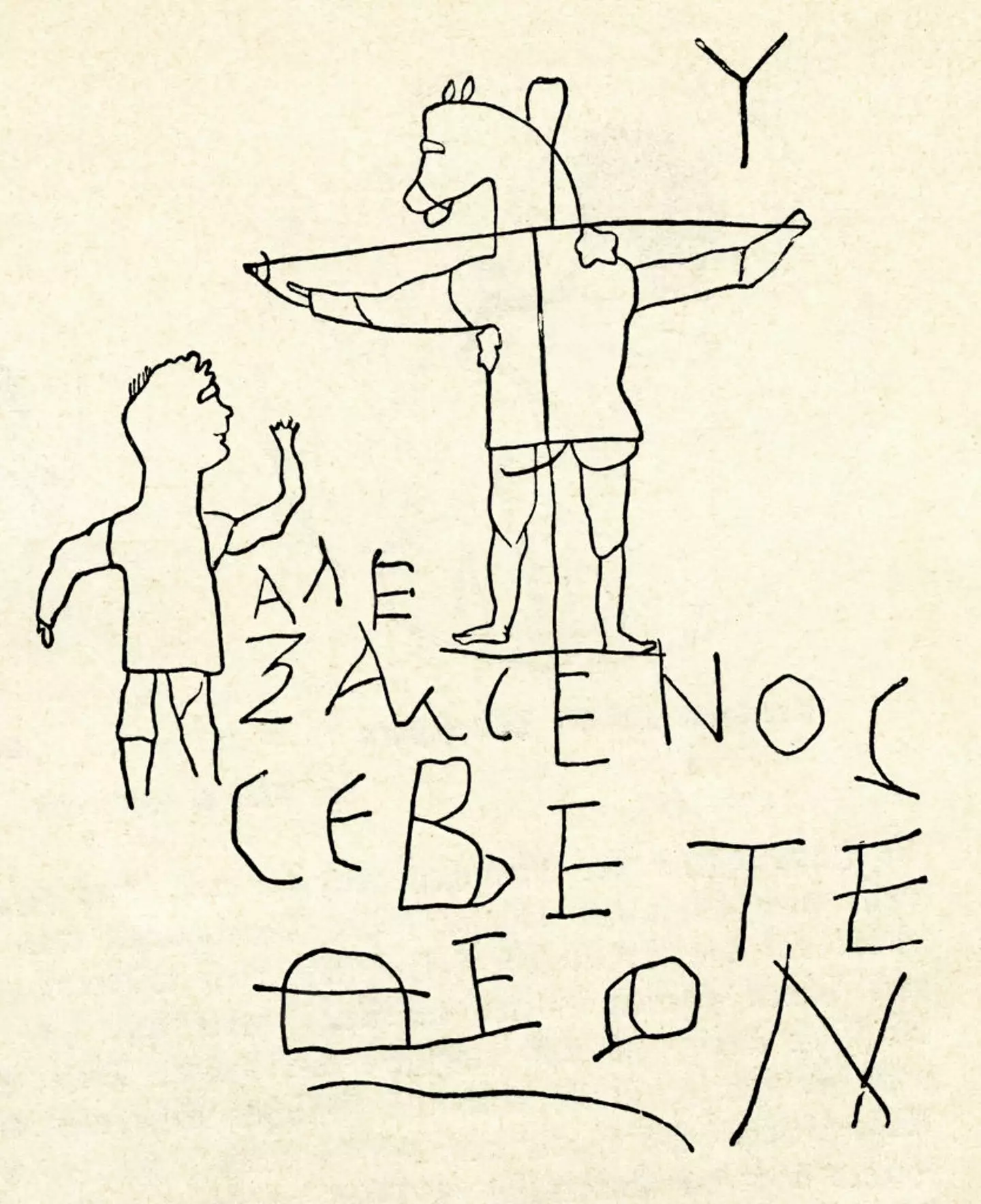

Alexamenos graffito – Roman anti-Christian graffiti discovered on a wall in Palatine Hill, Rome. Greek inscription reads ‘Alexamenos worships his God’ with an image of a man worshipping a crucified, donkey headed figure (Culture Club/Bridgeman via Getty Images)
7. Jesus’ brother James
The James Ossuary, a box of remains, included the inscription: “James, son of Joseph, brother of Jesus.”
Bible scholar at the Asbury Theological Seminary Dr Ben Witherington III told the MailOnline: “The likelihood of that particular combination of those three names not referring to the famous James the Just, and his father Joseph, and his brother Jesus are slim to none.
“If it were true that the crucifixion was the end of Jesus’ story, no one would be bragging about being related to him on an ossuary.”
Although the relic has been claimed to be a fake by the Israel Antiquities Authority who took Oded Golan, an Israeli businessman, to court over it.
But if it is real, then it would certainly indicate that Jesus lived.
Featured Image Credit: The Print Collector/Getty Images / Israel Museum
Topics: Religion, History, Catholic Church

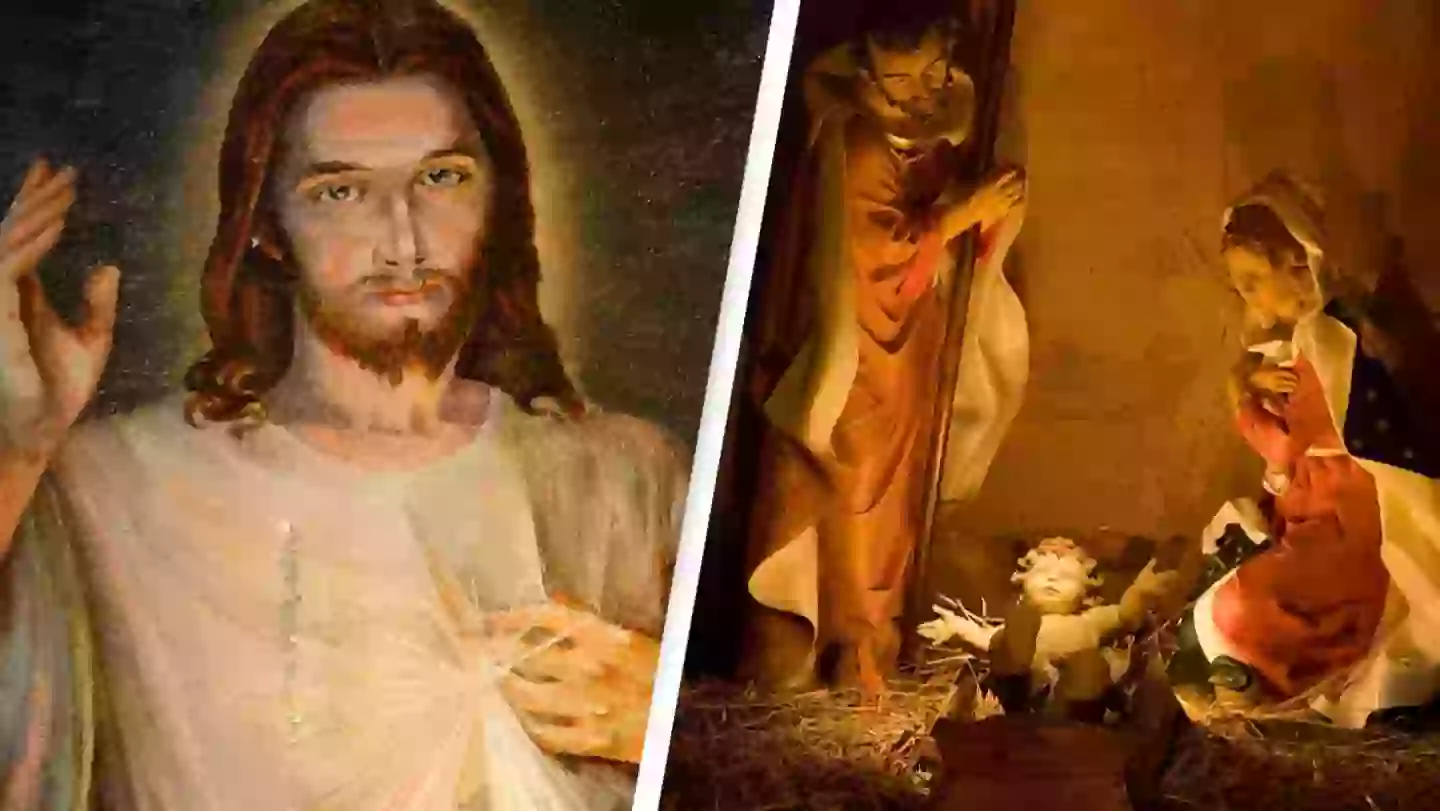
Scientists have revealed when Jesus was really born, and it’s certainly not the date you’d expect.
With Christmas fast approaching and millions getting into the festive spirit with parties, presents and turkey, the big day represents a deeper meaning for many.
For many, December 25 marks the 2,023rd birthday of Jesus Christ – but the reality, according to some experts, is that Jesus wasn’t born on that certain day in December.
While we don’t know for sure, researched detailed in the MailOnline suggest that Jesus may have been born during the spring, throwing curveballs into everything many have believed for so many years.
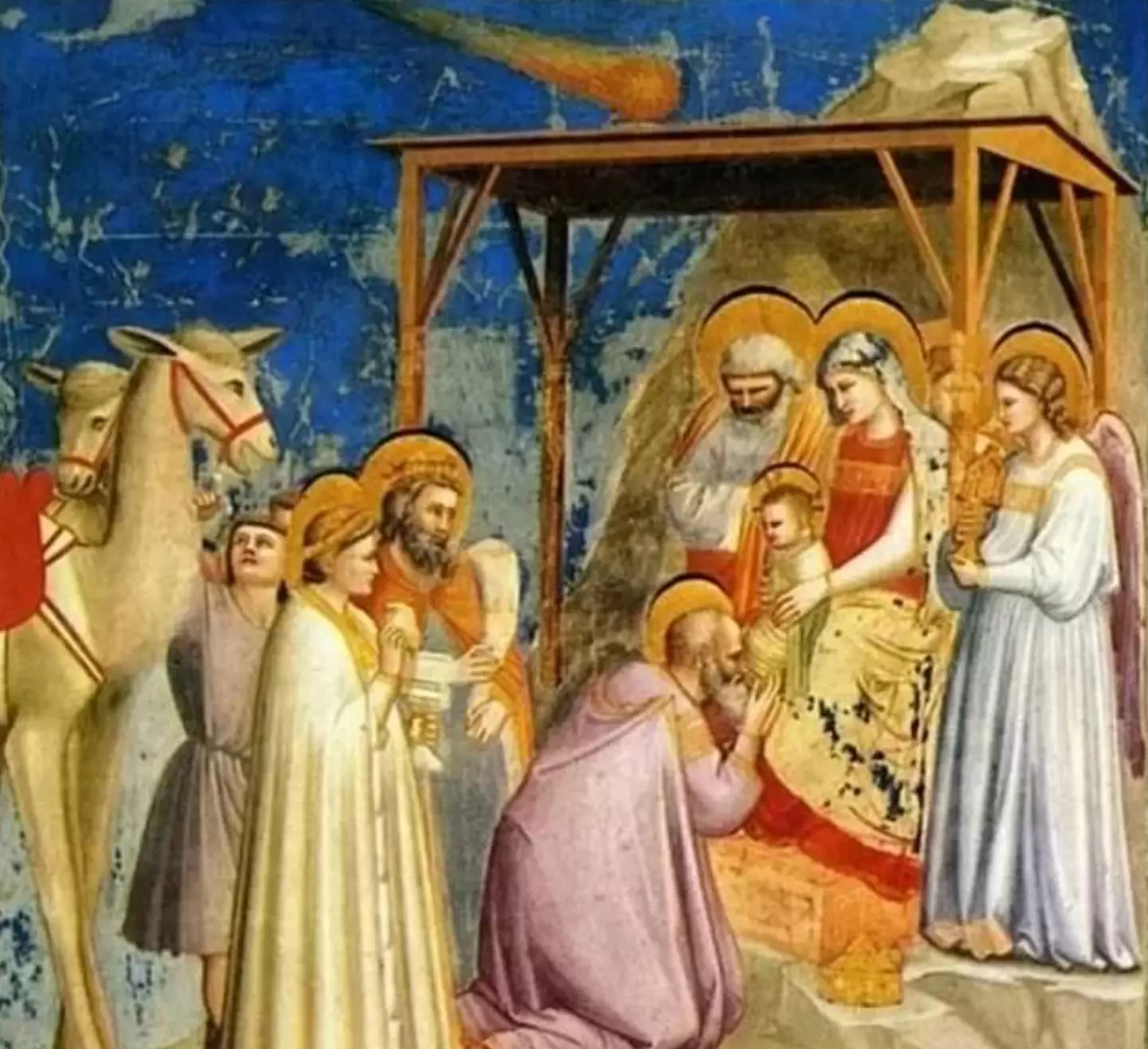

Jesus may not have been born on December 25 after all (Wikipedia Commons)
On top of that, experts are suggesting Jesus may be a lot older than we all think, and the fact there’s no reason to believe Jesus Christ was born on Christmas Day.
Speaking to the MailOnline, Professor Lawrence Mykytiuk of Purdue University in Indiana said: “It remains a humbling fact that despite various claims, no one in modern times is really certain of the exact year of Jesus’ birth.”
Historian Flavius Josephus told the outlet that there was a lunar eclipse shortly before King Herod the Great of Judea died.
How does this look into Jesus?
Well, according to the bible, Herod said that all Jewish boys under the age of two must be killed.
While we can still not confirm this as a definite, it would suggest Jesus was born at least 24 months before King Herod’s death.
As for potential death dates of the king, according to experts these are: December 29, 1 BC, January 10, 1 BC, March 13, 4 BC and September 15, 5 BC.
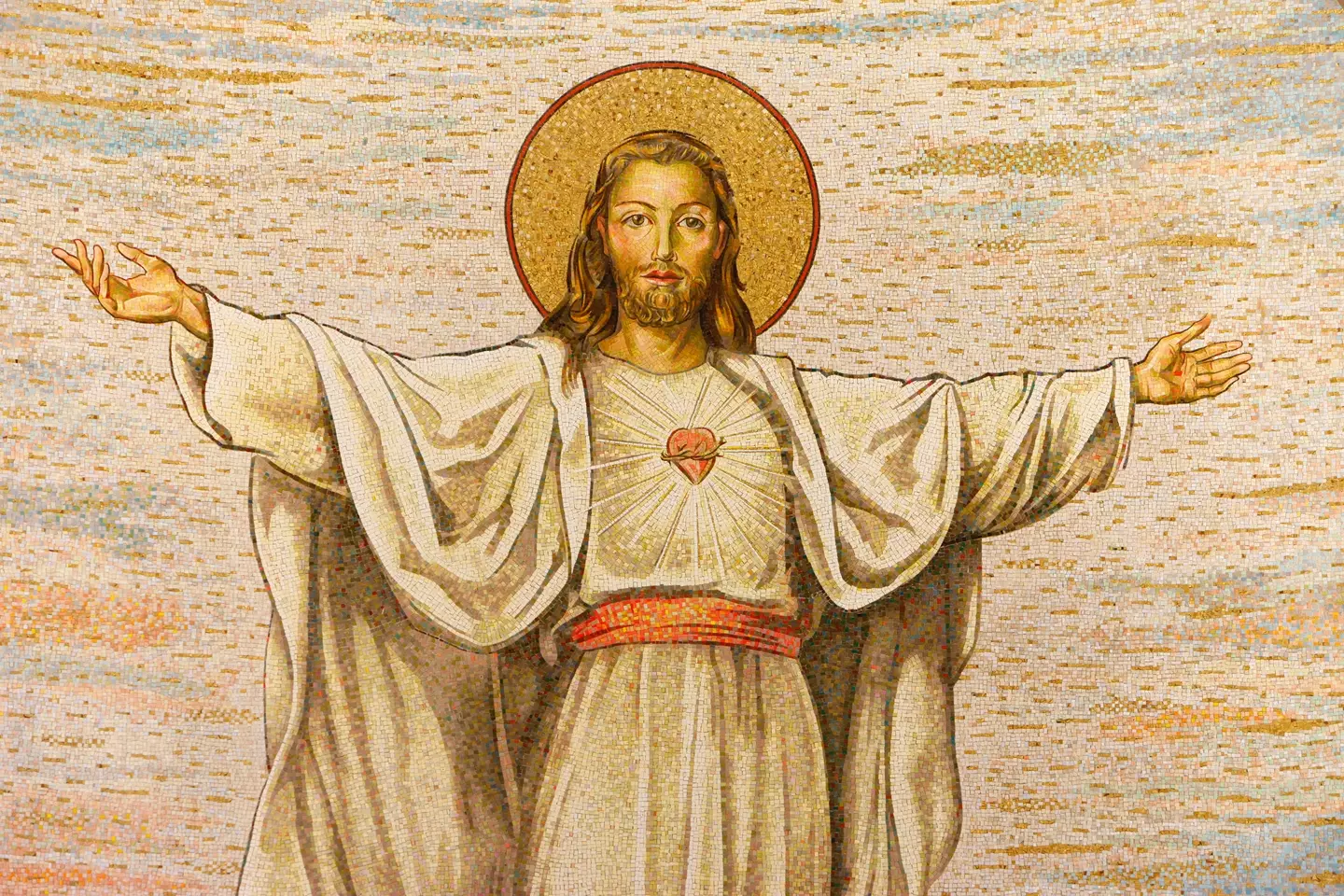

Jesus Christ may have been born in the spring (Getty Stock Photo)
Professor Mykytiuk added: “Josephus also tells us in two places that the Jewish Passover occurred soon after the death of Herod the Great. Because the Passover is observed in the spring; September, January, and December are ruled out.”
The professor continued: “It is most unlikely that Jesus was born on any day in December, let alone on December 25th, because ‘there were shepherds living out in the field, keeping watch over their flocks at night’.
“During winter, shepherds kept sheep in the fold to protect themselves and their sheep from severe weather. This fact of plentiful grass in March fits with the lunar eclipse occurring shortly before the death of Herod the Great.
“The narrowest date one can confidently arrive at for Jesus’s birth seems to be the month of March, during the years 6, 5, or 4 BC.”
Featured Image Credit: Getty Stock Images


New evidence has come to light surrounding a bone box believed by some to belong to one of Jesus Christ’s brothers.
In 1976, antiques collector Oded Golan came into the possession of a limestone bone box and a rather exciting inscription on the outside.
The inscription
The phrase ‘James, son of Joseph, brother of Jesus,’ was inscribed on the outside of the bone box. In the Bible, the names of Jesus’ brothers are mentioned several times, including James, Jude, Simon and Joses.
Nicknamed the James Ossuary, the box subsequently stirred up questions as to whether it once held the bones of one of Jesus Christ’s brothers inside.
After the discovery was made public in 2002, it was slammed by the Israel Antiquities Authority (IAA) which dubbed the inscription as being a forgery, as per Live Science.


There’s been much debate over the authenticity of the inscription (Drew Cunningham/Getty Images)
Doubt over its authenticity
The Israel Antiquities Authority (IAA) appointed a committee of scholars to study the ‘brother of Jesus’ inscription and reported that its findings and it was concluded the inscription was a forgery, Biblical Archaeology says.
However, Dutch scholar Pieter van der Horst accused the IAA of only appointing committee members who had already exhibited skepticism.
After seven years, the trial concluded clearing Golan and anyone else of any forgery.
Although, Bible scholar at the Asbury Theological Seminary Dr Ben Witherington III told The Daily Mail in November this year: “The likelihood of that particular combination of those three names not referring to the famous James the Just, and his father Joseph, and his brother Jesus are slim to none.
“If it were true that the crucifixion was the end of Jesus’ story, no one would be bragging about being related to him on an ossuary.”
Although, new evidence has seemingly suggested the box may hold a genuine connection to Christ.


New analysis has reportedly been performed on the box (Drew Cunningham/Getty Images)
New analysis
Earlier this month, Golan told Crosswalk.com it’s ‘almost sure’ that the ossuary ‘belonged to James, the brother of Jesus’.
Why? Well, he says ‘several chemical tests’ were performed on the box and ‘especially to the inscription itself’ – ‘the more important element’.
And the tests allegedly ‘proved that the whole inscription is authentic’, with Golan adding: “It was engraved several thousand years ago.”
He resolved: “If you put all those elements together, we are really facing one of the most, most important items ever found, not only in Israel, I think, but in history. …I think now there is no question about the authenticity of it.”
